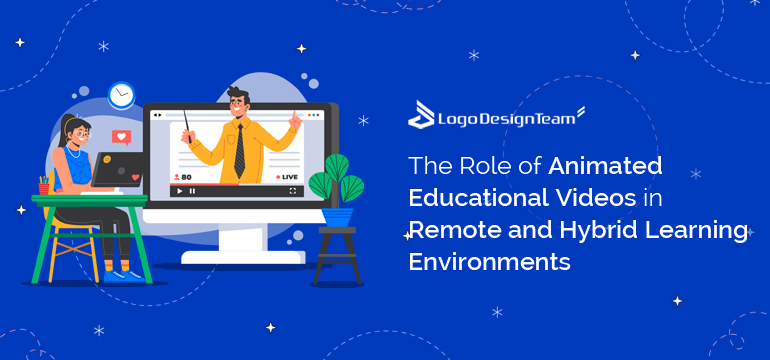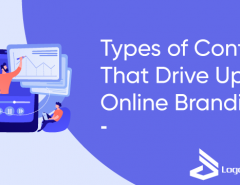The pandemic is as good as gone. Wanna know what’s the upside?
People can work and move around freely.
And, the downside:
The problem is distant socializing became a norm. And, for many it has become a habit. One that can be really hard to break.
While educational institutes and corporates got to learn how they can curb their overhead costs, students and employees also figured out on their own how a remote or hybrid role would help them to achieve a healthy work-life balance.
As an example, you can set your own priorities and order papers for sale, thereby freeing up some time for your personal life.
It may sound like too much happening too soon. But, the reality is people have adjusted to the new comfort of working hybrid. Same goes for learning. In fact, the e-learning market stands currently at a value of $250 billion.
Not only are offices having their employees report from remote locations, but more importantly, people are learning remotely.
For those who were voting for contact classroom experience, now prefer a hybrid one. Currently, the e-learning market stands at $250 billion. That shows the volume of opportunities we have in e-learning today.
Institutes are hiring artists as they start to believe that partnering up with a video animation company can help them capitalize on the opportunity.
It is fascinating to see how quickly so much has changed. Students seem to have adjusted to the new norms really quickly.
But have the teachers adapted too? Have they taken on a different approach to advance learning in a hybrid environment?
Let’s find out. In this blog, we’ll not only unveil the latest educational trends. But, more importantly, we’ll also expand on the role animated video content will play in improving the hybrid learning experience.
We’ll also look at how animated educational content can enhance the delivery of instructional content. And, what role instructional designers will play?
So, let’s dive right in!
How animation affects the mind?
Visuals are compelling and our minds are naturally wired to process them more easily. You shouldn’t be surprised to know that more than 70% of all learners are visual learners. And, you brain processes visuals 70 times faster than text.
You might need a 3000 word blog or an article to explain a concept in great detail. A video with some a narrative animation, might do it in one second.
And, probably more effectively. While most may oversee video as a medium of entertainment, they’re also overlooking the fact that learning happens when a person is having fun. You don’t want them to have any kind of stress.
More importantly, any motion can distract your viewer and hold their attention. Producing videos make more sense, especially in a digital world where, everyone is wired to scroll on their phone and get distracted with video content that is compelling and valuable, yet educates in a playful way.
Potential uses of video content
It is said that 10% of learning happens when you read something. 20% happens when you’re shown how to execute a task. And, the remaining 70% happens when you practice it for long hours. Just to internalize a concept better.
That’s where instructors become seriously valuable. Know that these insights are meaningful for education, regardless of the environment you pick.
So, instructors sharing experience and methods to execute a job in video form can serve the purpose for 90% of learning. Yes, reading is good. But, textual content alone might not help. And, the experience can be boring and perhaps difficult for those students who are used to watching and absorbing knowledge from videos.
Apart from its need, here are some potential uses of animated educational video;
- Animated content may help a great deal to infuse a concept, particular those related to scientific research or in chemistry and physics.
- While the cost may be heavy for video production, one needs to acknowledge that educational content is valuable and holds the potential for a much wider distribution across multiple channels. That might help in covering the cost.
- Next, animation in education may also work well to tell a story or paint the scenes of history to make the discussion exciting for young children who desire to visualize.
Opportunity for future
Teachers may appear monotonous in classrooms. Lack of interaction during the class can be boring and dull for students.
It can be a struggle to pay attention to static screen. Animations can elate the video experience. Transitions and slideshows or sound effects in presentations might help more.
Another useful opportunity for future could be having learning management system integrate animations. It won’t just add a ton to the interactivity of the platform, but also engage more users and brace them for a captivating learning experience.
Changing opinion around video
Videos are not just for entertainment. Especially animated videos can be mistaken to serve the entertainment needs of children.
However, it should not be seen that way anymore. And, frankly the opinion of parents and teachers is changing around video content for education.
While educational videos can be boring and sound too monotonous with a teacher sitting in front of the screen. And dictating or reading from slides. Instead, animated delivery might be effective.
It won’t just make students go to sleep, but paired with a teacher’s voiceover, it can instill concepts with a lot more ease, making it all seam really effortless.
So, the opinion around videos is changing. In fact, we even have learning platforms that endorse this idea better than anyone.
Case in point: Coursera
It’s probably the best platform for online courses. They have videos on almost anything. Plus, there is special focus to micro-based learning. Videos on a single concept have a 3-4 min length. Which makes it easy to digest for the learner.
And, to keep the attention and see, if the student is actually progressing, long sessions are followed by assignments, quizzes, and discussions to share personal experience and advance learning more quickly.
Videos feature animations as well as whiteboard stuff to instill ideas with ease. Anyone can go and revisit the lectures and assignments.
What the future looks like?
Yes, the future is uncertain. But for educators, there are no clouds of uncertainty looming right now. Hybrid model for learning has its advantages. And, students today prefer a combination of both. They want to have a taste of both in-person classes and online learning.
It allows them more flexibility. On the other hand, it also offers educators an edge to cut costs. And, reduce time. While lectures can be recorded, people can revisit video content and internalize from the comfort of their homes. No one needs to call teachers lazy for that.
For training needs, employees can benefit with hybrid learning. It would help employers save on overhead costs as well as the commute time, which averages much higher for mega cities.
So, hybrid or remote work models or training programs show potential for greater cost efficiency. It would really hard for any business to go old school with in-class trainings once they go hybrid or fully remote.
Interestingly, since 2021, we’ve seen the creator economy pick up steam in no time. Remote workers are only growing as digital nomad is one of the coolest occupations of 21st century. While you can travel to Singapore or sit on a beach in Australia, you can take meetings as well as interviews.
And, even prepare payrolls or co-ordinate with your audit team. Or if you want make it sound cooler, why not give a try to watching your corporate trainings while you sip coffee in the middle of a theme park.
Some would certainly hate it, but it’s no surprise that the younger clan of employees prefer it. So, hybrid is getting exciting.
Final thoughts
One thing is for sure, the learning space has changed irrevocably.
Animated educational content has more demand than we knew of. Instructional designers are working continuously to hold the attention of learners. While at the same time, improve course completion rates.
And figure out how they would test skill or competence. The bottomline is hybrid environments are growing. And, arguably they’re proven to be successful as they accommodate to the needs of flexibility for employees and learners.
FAQs
How to create quality animated learning content?
When starting off with creating an animated learning video, you should plan to captivate your audience. Make sure to do that in the few starting seconds. Following steps will guide you in crafting quality animated content;
- Plan your creative brief
- Start with scripting
- Create assets and Decide color scheme
- Decide the time duration
- Move with storyboarding
- Start with animation and render
- Finalize with render and editing
- Include sound or music effects
What kind of animation is used in education?
3D animation is more common among educators when teaching geometric shapes. You’ll commonly hear the term isometric shapes in motion design. While 3D is more common, animations in education usually take a more narrative approach as these tend to trigger in the scene, when there’s a need to inspire, inform and illustrate a concept to the learner.
Why animation can have an impact in e-learning?
Animations can take the learning experience to a whole new level. These may be subtle and small in comparison to other content, but their impact can be pretty impressive. Not only can you outshine as an educator, but also impact the learning of your students as they won’t find the class boring or dull.
Author Bio: Jane Collen
Jane Collen is an animation expert with over 6 years of experience in the industry. As a Senior Content Writer at BuzzFlick, a leading animation studio and video production company, Jane has been instrumental in creating engaging and compelling animated videos for clients across various industries.




